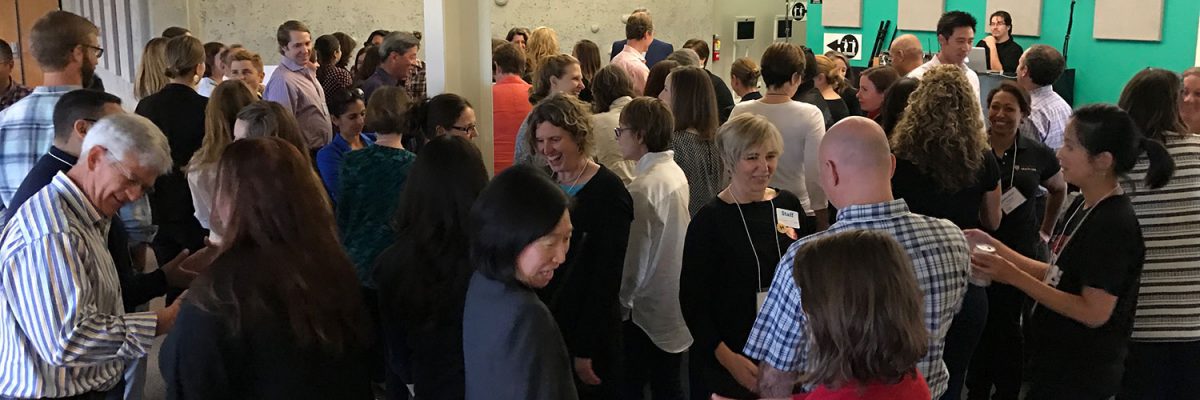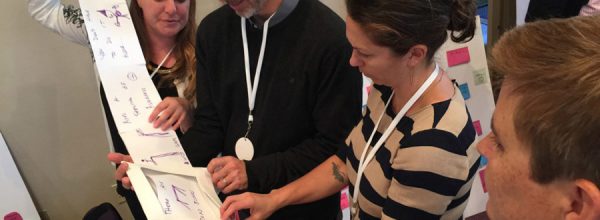We had not intended to schedule our fall SNIN meeting on Election Day—it just happened. We were a bit chagrinned when we realized the timing, but this was not the first time the conference had coincided with a day when the future of American healthcare hung in the balance. In 2012, our very first SNIN meeting was held on the day the Supreme Court upheld key sections of the Affordable Care Act. It felt like an auspicious connection. The election last week, however, did not.
The Affordable Care Act has been hugely impactful on all of our work in healthcare. For the last five years, nearly every program CCI has run has been framed around meeting the challenges of implementing the ACA, or of the shifts in payment structures that have since followed. Millions of uninsured surged into the healthcare system, and we worked to help both payers and providers adapt to the changes this influx brought to the landscape. Part of that has meant focusing more deeply than ever on the needs of the most vulnerable patients. In this moment of uncertainty it is important for us to consider the possibility that much of our work could be impacted.
While it is unclear what will happen next, we know that repealing the ACA in its entirety would bring huge chunks of our health system to a screeching halt. Twenty-two million people could lose their coverage. So, many believe that the new administration would roll back only parts of the law, or would replace it with their own vision. As this op-ed in the New York Times pointed out, leaving just the politically popular parts of the ACA could create an even more untenable system.
Still some of the discussion is cautiously optimistic: with political deadlock in Washington finally broken, they say, the government can tweak or trim the parts of the ACA that haven’t worked as well as intended. We all know the ACA is an imperfect law, so perhaps this is a great opportunity. If cooler heads prevail, the net result may be a step forward for our health system.
Until we begin hearing actual proposals, all of this is mere speculation. And speculating in this time of uncertainty is important. But perhaps more important is beginning to make preparations for the different scenarios.
We have a responsibility to not do the easy thing and preserve our own margins at the cost of doing the best for the health of our patients. It may be tempting to abandon innovation, improvement, population health, patient engagement, human-centered design, value-based payments and all the other facets of transformation that we’ve all been taking up the last few years.
We can’t let that happen. We have to prevent a slide-back. More importantly, we have to soldier on with payment reform and a shift to data-driven population health management. Nothing would be worse than leaving these tasks half-done. Work will be harder. Days will be longer. But we can’t go back. The only way out is through.
This isn’t about politics. It’s about caring for our most vulnerable and needy patients. We all know that legal, financial and social stress can have major negative health effects. If we are serious about caring for our patients and reducing the costs of providing that care, we need to be their advocates and defenders outside the exam room.
How do we manage all this, when the work community health organizations were doing before this election was already such a struggle? Our SNIN meeting last week was organized around a theme of “recruitment, resilience and retention.” These are themes will be even more vital in the days ahead.
At SNIN we looked at a number of methods for approaching recruitment, resilience and retention. Our keynote speaker from Delivering Happiness explained how Zappos found the key to customer satisfaction through focusing on employee happiness first. Given this clear ROI on happiness isn’t going away in the coming landscape, we want to continue that conversation.
Delivering Happiness also led a workshop on finding and centering one’s values. This begins by looking at how good times are powered by values working as intended, while unhappy times are accompanied by a failure of our values. Finding one’s values through this method feels more authentic than simply sitting down and deciding how one’s organization would like to present itself. And authentic values inspire commitment and action. In the wake of Tuesday’s news, this values exercise felt unexpectedly cathartic.
Futures Without Violence also had a timely presentation in our Gallery of Innovation, sharing evidence-based strategies for dealing with trauma and stress. These can be as simple as pausing to take ten slow breaths, which helps flush cortisol for hours to come. These can be the building blocks of creating a trauma-informed workforce that can better address the pain and violence in their own lives and the lives of their patients. Many safety net patients are indeed feeling scared, vulnerable or traumatized these days, and it’s critical that clinic staff and providers are able to take that into account in their work.
Teach for America shared their success getting young people to sign up for some of the hardest teaching positions in the country. Their secret is starting recruitment early, with a presence on campuses that gets students interested in the program before they even know for sure that teaching is what they want to do. It’s not that hard to imagine health centers doing the same thing, reaching out on college campuses and building a career on-ramp that helps many more people see themselves working in the safety net.
These and other organizations, from Outward Bound to La Maestra Family Clinic, shared lessons and perspectives on these challenges that all community health centers struggle with. And what is so encouraging is that the lessons of SNIN also feel like the lessons for continuing the vital work we do after the shake-up of this election.
Invest in your people, because the work you are asking them to do will be harder. Carve out time for learning and play, because those will invigorate you for the tougher fights. Articulate and live your personal and organizational values, because it’s the mission that makes this work worth doing.
Find this useful or interesting? We’re constantly sharing stuff like this. Sign up to receive our newsletter to stay in the loop.



